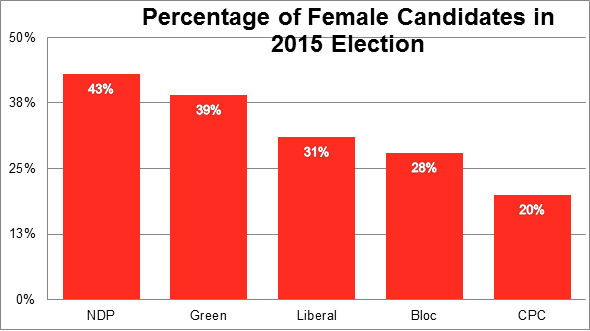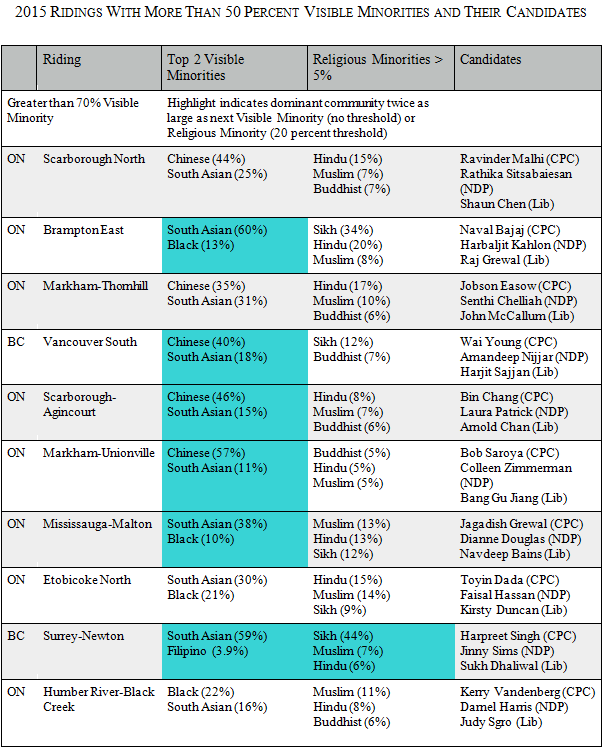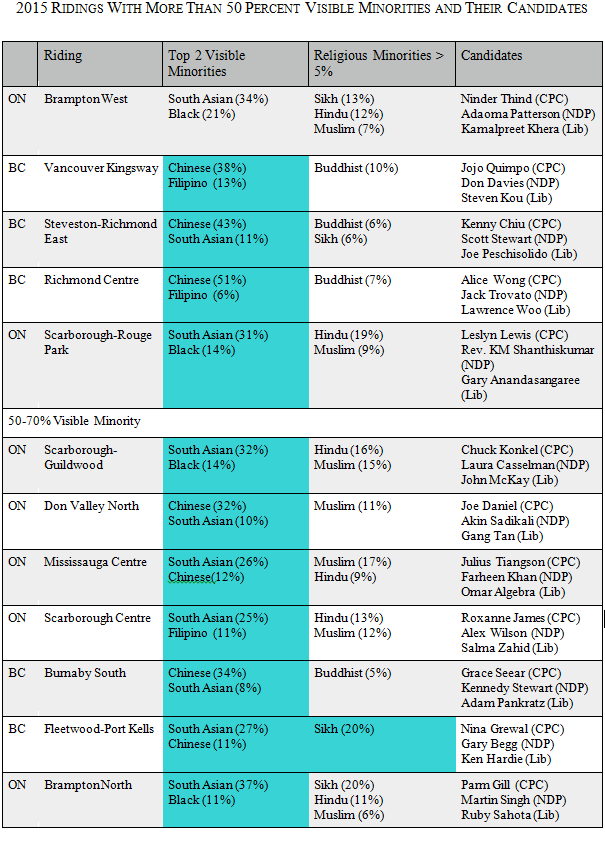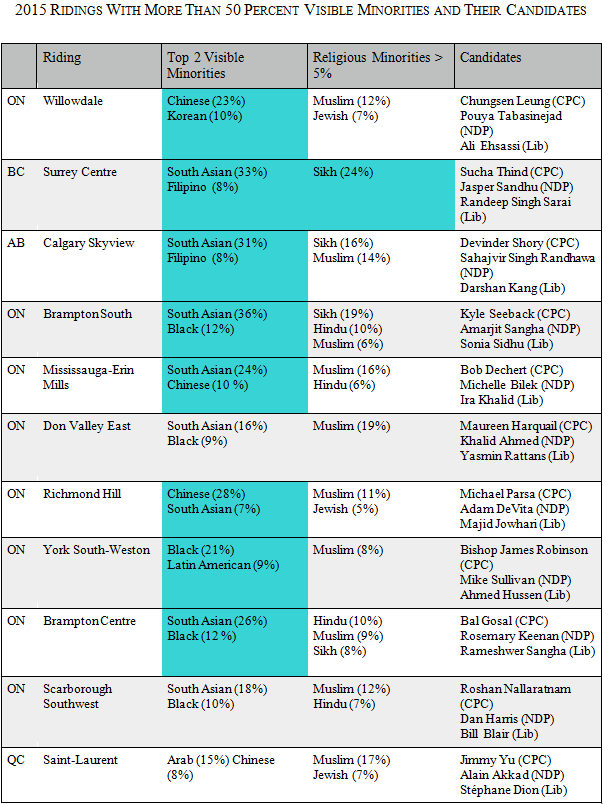Is the increased number of “visible minorities” being reflected in party candidates? Which ridings are these candidates running in? And do these candidates reflect the largest groups in their ridings?
Now that we know the names of all candidates, we can answer these and related questions.
But first, as a basis for comparison, how has women’s representation increased in 2015 candidates? The analysis by Equal Voice shows that overall representation from the 2011 election has slightly increased from 31 to 33 per cent (still far below equality), with the relative ranking of parties below.

To assess visible minority representation I have used candidate names, photos and biographies to identify visible minority candidates. Although not as exact as identifying women candidates (e.g., subjectivity in analyzing photos), it nevertheless provides a reasonably accurate indication of how well Canadian political party candidates represent the population of visible minorities who are also Canadian citizens (15 percent).
Building on an earlier study by Jerome Black showing the diversity in earlier elections, I went through the candidate lists using the criteria above, concentrating on the more diverse ridings. Out of a total of 1,014 candidates for the three major parties, 142 or 13.9 percent were visible minorities. The party-wise comparison chart shows a growth in visible minority candidates for the three major parties plus the Bloc.
For the 2015 election, the Liberal party has the most visible minority candidates, slightly greater at 16 per cent than the number of visible minority voters (those who are citizens). The Conservative party and the NDP have slight under-representation (13 per cent), while the Green party only has about half as many visible minority candidates (eight percent) as voters. The Bloc Québécois only appears to have a two visible minority candidates (under three per cent of Quebec’s 78 seats).
The chart below provides the comparative numbers for each party in the 33 ridings that are more than 50 per cent visible minority, broken down by gender.

Additional characteristics of these 33 ridings, in terms of the candidates, include:
- Out of the 99 candidates from the three major parties, 68 are visible minorities (over two-thirds). These account for just under half of the 142 visible minority candidates in all ridings.
- 19 candidates are women (19.2 percent)
- In 15 of these ridings, all major party candidates are visible minorities;
- Only one riding, Scarborough Guildwood, has no visible minority candidates;
- The Conservative Party has the most visible minority candidates (25), followed by the Liberal Party (24) and the NDP (19); and,
- In general, but by no means universally, many candidates come from the larger communities in these ridings, particularly South Asian ridings as the attached table shows.



Andrew Griffith is the author of Multiculturalism in Canada: Evidence and Anecdote, Policy Arrogance or Innocent Bias: Resetting Citizenship and Multiculturalism and many other works. He is a former Director-General of Citizenship and Immigration Canada, Citizenship and Multiculturalism branch. He regularly comments on citizenship, multiculturalism and related issues, in this blog and the media.





